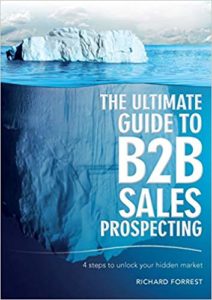Someone once said to me, “I was certain it would be a success. Everything was in place—a great product and a truly unique selling proposition. We had a firm understanding of the prospect’s corporate requirements and buying process. I really don’t get why the results didn’t happen.”
I actually have a pretty good idea.
There is a mistaken belief that B2B buying behavior rests in coldly logical, rational business decisions, and that business-to-consumer (B2C) decisions are more personal and emotional.
This is an untruth that generally holds businesses back from making a connection to the business buyer on a personal level.
B2B Buying Perspective
The actual fact is that B2B purchasing is often highly personal and emotional. It is even more so than B2C buying, simply because of the inflated personal risk experienced by B2B buyers. Corporate purchasing agents must take into consideration the core business implications of those buying decisions.
In considering the functional benefits of the purchase, corporate buyers examine use logic and reason. What will be the effect of this purchase on operational performance, productivity and efficiency? They also examine business outcomes such as profitability, expenses and revenue.
Personal Risks
At the same time, though, that buyer has a personal stake in the purchase. The buyer’s perception of their own personal value links inextricably to any buying decision.
Right in back of their mind sit the considerations of professional risks and benefits. Will this purchasing assessment make them a better leader, or improve their day-to-day working (and non-working) life?
There are also social risks and benefits. What will be the impact of their decision on colleague relationships? Will it mean ridicule or admiration from others?
They consider the emotional benefits and risks. How will their decision affect their personal confidence, enthusiasm and even happiness?
They consider the benefits and risks to their self-image. Will they feel accomplished after making the buying decision? Will they feel they are making a positive contribution to their organisation and to society?
The personal risks associated with B2B purchasing are almost always higher than those of B2C purchasing. B2B buyers fear the loss of a huge amount of time and energy if a purchasing decision doesn’t work out well. They fear a potential, and very public, loss of credibility. They can fear the loss of their job, or even career, if they are responsible for an unsuccessful purchase.
Response from the B2B Salesperson
So what’s a B2B salesperson to do in response to the buyer’s peculiar cocktail of fears, apprehensions and insecurities?
If you’re the salesperson, it’s important that you engage B2B decision-makers emotionally as well as commercially, as it’s their emotions that will invariably drive their decision to purchase, or to not purchase.
Make it a Personal Pitch
Let’s say you’re selling an IT solution and you’re negotiating with a buying company’s Head of IT. The fact that the solution would save the organization money may not be the most important factor if it doesn’t provide a personal ‘win’ for this individual.
If your solution is so reliable that it potentially stops people calling the IT Head outside normal working hours to fix problems, and therefore reduces this person’s stress levels (and the impact on their personal life), they are likely to favor the purchase and will be more disposed to advocate the purchase decision to other relevant stakeholders.
Getting at Personal Motivations
So how do you discover the B2B purchaser’s personal buying triggers? Research into this question was reported by the CEB Marketing Leadership CouncilTM in an article entitled ‘From promotion to emotion: connecting customers to brands’, published on www.executiveboard.com.
The article suggested that asking customers direct questions about their emotional needs or personal goals is rarely effective. Although customers are happy to share their business needs and goals, they are not always willing or able to articulate their emotions. To dig deeper, B2B sellers should use open observation of customers to spot nonverbal or contextual cues that reveal underlying emotions.
Craft Effective Business Relationships
One thing’s for sure, if you can achieve a clearer understanding of your prospective customer’s personal, emotional motivations for buying, you’re one step closer to forging an effective business relationship that will serve their needs, and yours, on many levels.
If you’re confident you understand your buyer’s personal decision-making process, you can also incorporate this when creating your wider sales and marketing campaigns.
Taking a personal approach in engaging with prospective customers is the best way to understand your buyer’s goals and build trust. You should always strive to engage in a person-to-person, two-way conversation, whether this be through telemarketing calls, qualitative research, psychographic research or even simply observing your customers in less formal contexts.
Pipeliner CRM empowers B2B salespeople to take that personal approach. Get your free trial of Pipeliner CRM now.












Comments